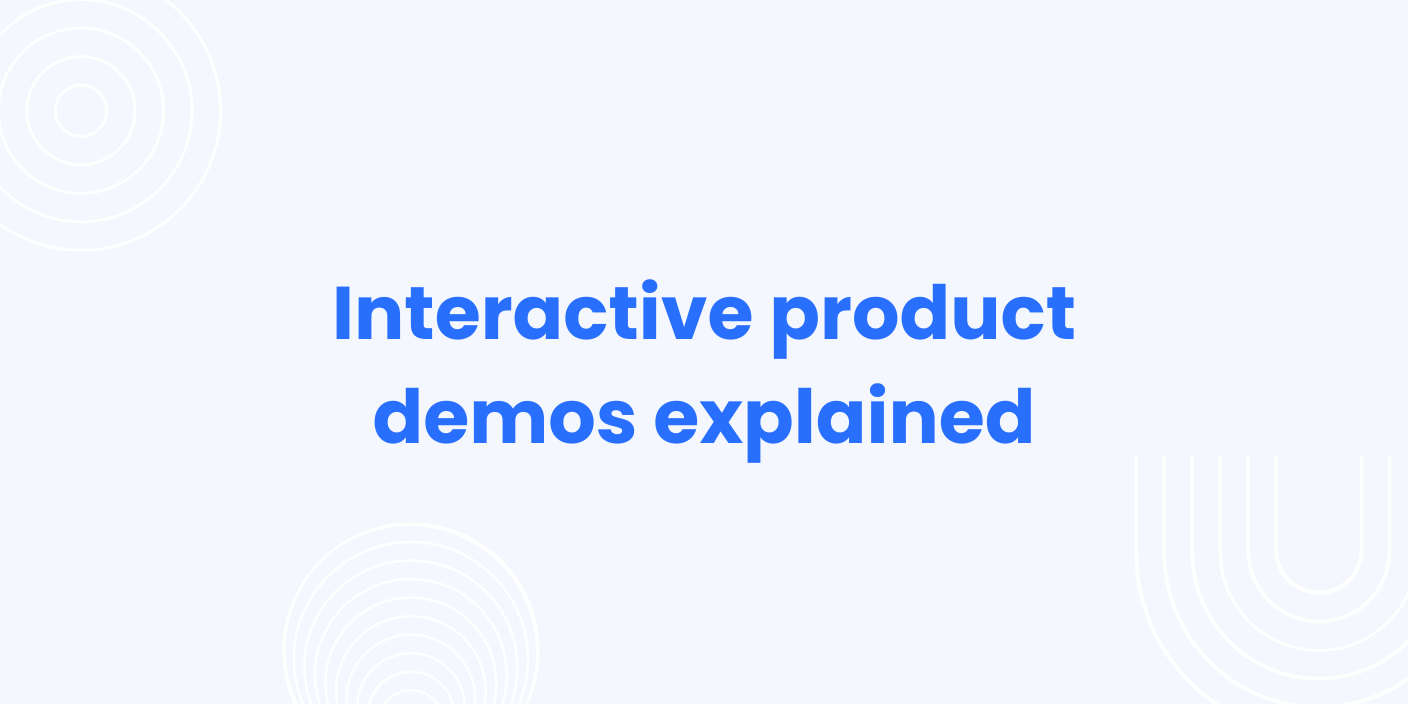What are interactive product demos?

This means you can embed your product, loaded with data, into your website and let people self-educate/self-qualify at their own pace.
Unlike an onboarding tool, they show your product in a state that demonstrates to prospects the functionality of your software without making them guess what it’s capable of. This is great when they are still deciding whether they want to sign up for an account or book a demo.
What do they look and feel Like?
Great demos look and feel just like the real thing.
They are clones of your app, rather than a screenshot or video. This means eaning that each button and element is fully interactive just like on the original website.
The best way to see this is to experience on for yourself, so here's a simple example:
- They are an excellent tool for companies looking to showcase their software products to potential customers.
- They provide a hands-on experience that helps users understand the functionality of your SaaS platform better, leading to higher adoption rates and increased customer satisfaction.
- They are customizable, engaging, and provide a competitive advantage in the marketplace.
Why are they better than a video or screenshot?
They are more effective than screenshots and videos in a few ways:
- Improved Understanding: They provide a hands-on experience that helps your prospect understand your platform's functionality better. Notably, they let your prospect take your product in at their own pace, instead of making them pause a video or zoom in on a screenshot.
- Increased Engagement: They are more engaging than traditional marketing materials like videos or screenshots. The viewer is able to get a feel for your product, and can take their time to understand your application. On average, viewers stay on each step for 10-15 seconds! In a longer demonstration, this equates to significantly more time taking in your app than a walkthrough video. This engagement can lead to higher conversion rates and a more significant impact on potential customers.
- Customizable: They can be customized after recording to showcase specific features or use cases, making them an excellent tool for targeted marketing campaigns.
- Higher Retention Rates: They are more memorable than traditional marketing materials because the user is using your product, leading to higher retention rates and increased brand awareness.
- Competitive Advantage: They provide a competitive advantage in the marketplace by showcasing a company's software in a unique and engaging way, which is becoming really important in for Product Led Growth strategies and buyer-led purchasing environments.
How do you create an interactive product demo?
This is our 5 step simple guide to making an interactive demo:
- Capture a flow of your app that often gets demonstrated by your sales team.
- Add annotations, reuse messaging and convey a simple story that highlights your value proposition.
- Delete or auto-progress through unnecessary steps, your prospects want you to get to the point.
- Publish your demo and copy the embed code
- Paste the embed code into your CMS (whether it's Webflow, Unbounce, Wordpress, Ghost, Wix, etc.)
Your first demo shouldn't be too complicated. Just get started and have a bit of fun. It's really easy to add new steps, change the order around, edit text, etc.
How do people use their demos?
There are a variety of ways to put them to use. We break these down in the interactive product demo hierarchy.
At a high level though, the most popular / common use-cases include:
- Interactive Platform Overviews
- Embedded into home pages & landing pages - where most of our users start
- Sending them out in sales follow up calls
- Pay-per click landing page content - Feature Overviews
- Demo center deeper content
- In-app feature upsell
- Targeted pay-per click landing pages
- Embedded in product pages - Use Case Deep Dives
- Specific follow up demos for a target account/prospect

